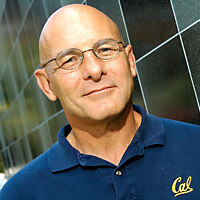David Patterson | |
|---|---|
 | |
| Born | David Andrew Patterson November 16, 1947 Evergreen Park, Illinois, U.S. |
| Education | University of California, Los Angeles (BA, MS, PhD) |
| Known for | Reduced instruction set computer RAID Network of Workstations |
| Spouse | Linda Patterson (1967) |
| Awards | |
| Scientific career | |
| Fields | Computer systems [4] |
| Institutions | University of California, Berkeley |
| Thesis | Verification of Microprograms (1976) |
| Doctoral advisor | David F. Martin Gerald Estrin |
| Doctoral students | |
| Website | www2 |
David Andrew Patterson (born November 16, 1947) is an American computer scientist and academic who has held the position of professor of computer science at the University of California, Berkeley since 1976. He is a computer pioneer. He announced retirement in 2016 after serving nearly forty years, becoming a distinguished software engineer at Google. [5] [6] He currently is vice chair of the board of directors of the RISC-V Foundation, [7] and the Pardee Professor of Computer Science, Emeritus at UC Berkeley. [8]
Contents
- Early life and education
- Research and career
- Past positions
- Notable PhD students
- Selected publications
- Awards and honors
- Charitable work
- References
Patterson is noted for his pioneering contributions to reduced instruction set computer (RISC) design, having coined the term RISC, and by leading the Berkeley RISC project. [9] As of 2018, 99% of all new chips use a RISC architecture. [10] [11] He is also noted for leading the research on redundant arrays of inexpensive disks (RAID) storage, with Randy Katz. [12]
His books on computer architecture, co-authored with John L. Hennessy, are widely used in computer science education. Hennessy and Patterson won the 2017 Turing Award for their work in developing RISC.